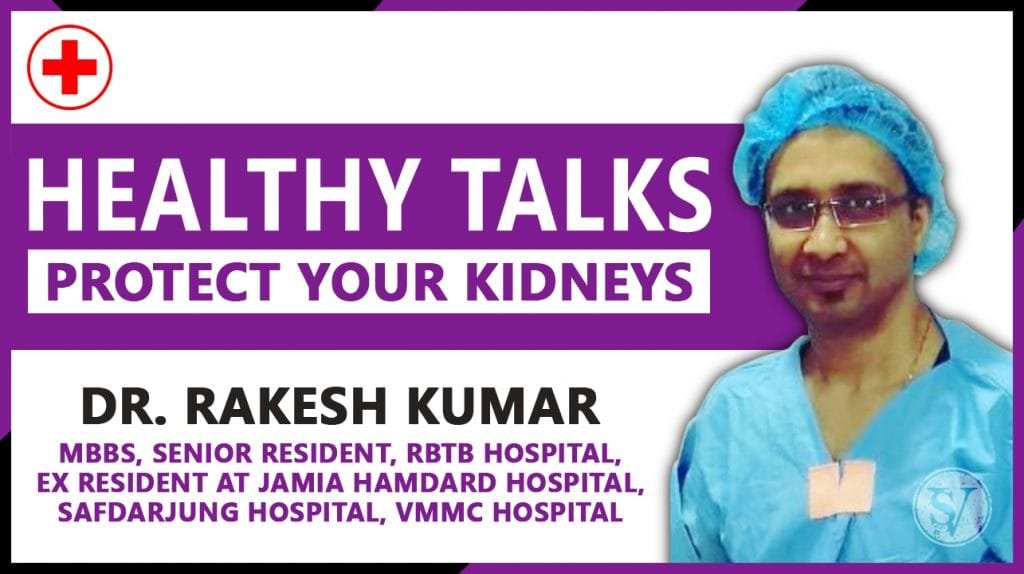Cardiac arrest is killing our youngsters and we need to take corrective measures to ensure that our most productive population is safeguarded from this sudden death. Indian Heart Association has expressed concern over the rising cases of cardiac arrests in the younger population.

We have with us Dr Rakesh Kumar, Resident, RBTB Hospital, New Delhi to talk about this. Here are the excerpts of his interview –
Why so many young people are becoming a victim of cardiac arrest?
Cardiac arrest is the number one silent epidemic rampant in India and South Asia. India accounts for nearly 60% of heart disease burden worldwide and it is the number one mortality cause among non-communicable diseases.
In last 15 to 20 years, there is an increase in heart disease in younger population. It is estimated that Indians are at a greater risk of getting a heart attack than any other ethnic group across the world.
You will be surprised to know every minute an Indian in an age group less than 50 years experiences fatal heart attack. In India of the total number of heart attacks, 25% cases belong to those who are less than 40 years in age.
We all know erratic lifestyle is responsible for the rise of cardiac arrest cases in India. What are other reasons contributing to this rise?
It is time to realize and accept heart attack and heart disease is not limited to old age group.
When we look for what is the reason behind younger age group suffering from several cardiac disease even cardiac arrest the first and foremost reason will come in mind is family history that is genetic issue. Anybody is at a greater risk of having a heart ailment such as hypercholesterolemia and hypertrophic cardiomyopathy if there is a family history of heart diseases. Other reasons include pre diabetic condition – insulin resistance, increased cholesterol level in blood.
Even we have seen normal level of cholesterol but having different types of cholesterol have high tendency to develop blockage. Next reason is rapid changes in lifestyle like urban lifestyle taking junk foods, narcotics, smoking, alcohol, no exercise at all. These all contribute to high blood pressure and sugar which lead to finally heart attack. Other reasons are extreme mental stress, lack of proper sleep, abdominal obesity, deficiency of vitamin D, premature menopause, sedentary habit and pollution.
Is it true that men are more vulnerable when it comes to cardiac arrests than women? If yes, what is the reason behind this phenomenon?
Yes, it is true but before menopause in Female.
After menopause, the incidents of a cardiac arrest in male and female is nearly equal. The reason behind this phenomenon is a hormone called estrogen.
It increases HDL cholesterol (the good kind), decreases LDL cholesterol (the bad kind), also relaxes, smoothens and dilates blood vessels so blood flow gets smoother. It also soaks up free radicals, naturally occurring particles in the blood that can damage the arteries and other tissues.
What are your top 5 recommendations to avoid the risk of cardiac arrest?
Yes, this is very crucial. What first comes to mind is focusing on ‘Primordial Prevention’. It means is that parents should teach their child to adopt healthy lifestyle, emphasizing their child about benefit of outdoor games and physical activity and keep away from bad habits and addictions. Second is adult should adopt healthy lifestyle and avoid junk food keep away from smoking and alcohol. Third is to follow the rule of ‘4-5’ which means 4 to 5 days of exercise in a week that includes 4 to 5 kilometer running or 40 to 50 minutes of walk. Fourth rule is to maintain sleep hygiene that is 7-8 hours of night’s sleep should be maintained. Fifth rule which is also the most important one is to mitigate stress, take regular break from work and spend time with family and friends to unwind.
What we, as a society could do to safeguard our younger population from cardiac arrest?
Society has a significant role to play when we talk about prevention of cardiac arrest. There has to be a culture of preventive measure like organizing a health check-up camp at regular intervals to check their blood sugar, blood pressure etc.
Society should also encourage best practices such as regular check up of lipid profile, regular check up specially if there is a family history of heart diseases.
Instead if encouraging bad food habits, we as a society should talk more about healthy food habits like intake of less sugar, low salt diet, importance of exercise walking, cycling, swimming to avoid cardiac related issues.
Another good practice is organising, training and active participation in Cardiopulmonary Resuscitation Program that is CPR program in which individuals should be taught how to check pulse, how to perform CPR, these all can be achieved only by community participation.
Say for example by interpersonal communication, that is face to face communication, charting, Banner displaying and all. By demonstration, because it works on the principle of seeing is believing, learning is doing. Seeing is believing learning by doing.
We also have to spread awareness about the of signs and symptoms of cardiac arrest. Like discomfort in chest. That is ranging from slight left side chest pain to heavy mass placed on chest wall. Nausea, indigestion, heartburn, pain abdomen, dizziness, lightheadedness, sweating for unobvious reasons. Chest pain radiating to arm and rarely pin in throat and jaw.
If a doctor says there is sign of cardiac arrest or some cardiac abnormalities, accept the situation, accept the advice, accept the diagnosis and go for treatment at the earliest possible time so that life can be saved.